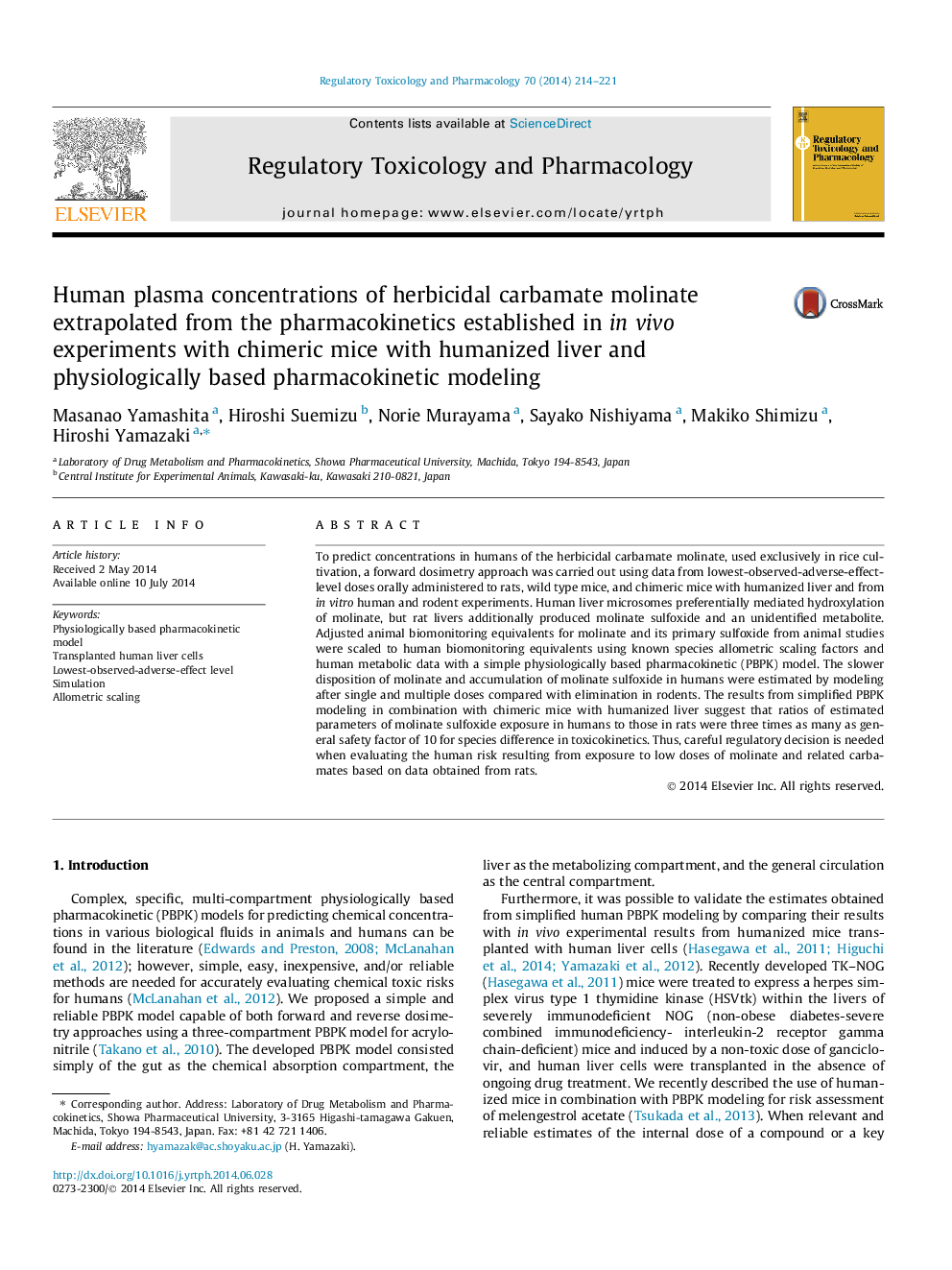| Article ID | Journal | Published Year | Pages | File Type |
|---|---|---|---|---|
| 5856884 | Regulatory Toxicology and Pharmacology | 2014 | 8 Pages |
â¢We developed a simple pharmacokinetic (PBPK) model of molinate.â¢Rat or mouse PBPK model of molinate was scaled to human model to predict in humans.â¢Molinate elimination in humans was estimated to be slow compared with those in rats.â¢Concentrations of molinate were evaluated by chimeric mice with humanized liver.â¢The simplified human PBPK modeling is useful for risk evaluation of molinate.
To predict concentrations in humans of the herbicidal carbamate molinate, used exclusively in rice cultivation, a forward dosimetry approach was carried out using data from lowest-observed-adverse-effect-level doses orally administered to rats, wild type mice, and chimeric mice with humanized liver and from in vitro human and rodent experiments. Human liver microsomes preferentially mediated hydroxylation of molinate, but rat livers additionally produced molinate sulfoxide and an unidentified metabolite. Adjusted animal biomonitoring equivalents for molinate and its primary sulfoxide from animal studies were scaled to human biomonitoring equivalents using known species allometric scaling factors and human metabolic data with a simple physiologically based pharmacokinetic (PBPK) model. The slower disposition of molinate and accumulation of molinate sulfoxide in humans were estimated by modeling after single and multiple doses compared with elimination in rodents. The results from simplified PBPK modeling in combination with chimeric mice with humanized liver suggest that ratios of estimated parameters of molinate sulfoxide exposure in humans to those in rats were three times as many as general safety factor of 10 for species difference in toxicokinetics. Thus, careful regulatory decision is needed when evaluating the human risk resulting from exposure to low doses of molinate and related carbamates based on data obtained from rats.
Graphical abstractDownload full-size image
